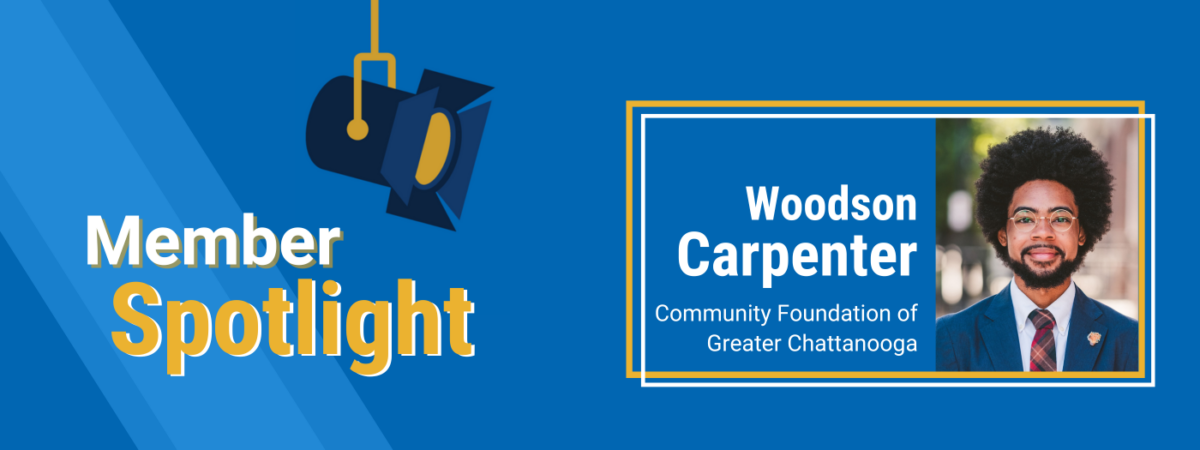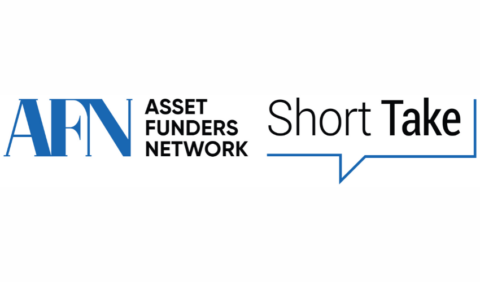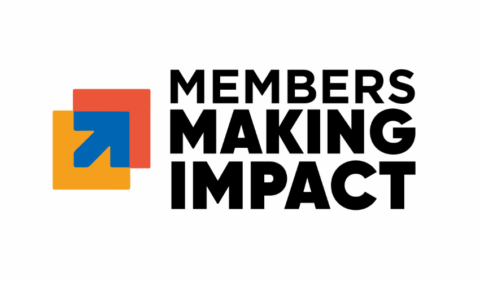 Meet our members! AFN’s greatest asset is our members—a diverse network of national, regional, and community-based foundations, financial institutions, and grantmakers—investing in advancing equitable wealth building and economic mobility. Check back each month and meet your peers!
Meet our members! AFN’s greatest asset is our members—a diverse network of national, regional, and community-based foundations, financial institutions, and grantmakers—investing in advancing equitable wealth building and economic mobility. Check back each month and meet your peers!
1: What is the mission of your organization and how is advancing equitable wealth building and economic mobility incorporated into the work?
Our mission is to work alongside our community and partners to transform generosity into lasting change toward a prosperous and just Chattanooga where all can thrive and achieve their full potential. This is evident across four key focus areas – philanthropy, impact, equity, and stewardship – where we work to address root causes, build lasting change, and support and inform a community of donors who are committed to long-lasting impact in our community.
One example of how we incorporate equitable wealth building is our leading investment in the Accelerator Loan Fund and Chattanooga Impact Capital Fund, programs that support early-stage and established entrepreneurs of color. While entrepreneurship can be a powerful tool for creating pathways toward economic mobility, entrepreneurs of color have long faced systemic and racialized barriers to accessing credit and capital through traditional methods.
By working with a local credit union, we provide low-interest rate loans to these entrepreneurs, and together, we create new banking and business relationships. These relationships include a business mentor who provides wisdom, relationship-building, thought partnership, and insight.
Another example is our strategic investments in BIPOC leaders and BIPOC led-institutions that are committed to systemic change in alignment with our mission, vision, values, and strategic priorities.
2: How does your organization currently or plan to explicitly and intentionally include and empower people of color in the design of your policies and strategies to close the racial wealth gap?
Equity is the lens through which we view and assess our work. It’s essential given our mission and priorities and the systemic realities reflected in them. Equitable access to opportunity is at the heart of our vision of a Chattanooga where all residents have access to the resources and relationships they need to thrive regardless of their race, gender, identity, or the zip code where they were born.
People of color from across our area are intentionally involved at every level of our work: staff and board; decision-making committees; a community advisory council; business, nonprofit, and community partners; consultants and contractors, and organizations and individuals we support.
s
3: Where are we lacking investments as a sector that will result in greater economic equity, and how can we address the gap?
A great deal of philanthropic investment understandably is placed with institutions or nonprofit organizations that have passed some kind of “credentialing,” be it formal or informal, which indicates to donors that they have the capacity and wherewithal to be good stewards of their investment. Given that needs will always outweigh available donor dollars, this caution makes perfect sense – but limits both the imaginations of givers and the capacity of potential leaders. Additionally, the criteria historically used to inform these decisions have often been developed from a limited range of experiences, identities, and perspectives.
Our job at the Foundation is to shift the culture around how these decisions are made so that we can equitably and inclusively reassess our understanding of concepts such as “worthiness.” Moreover, I think there is a need to recalculate where it makes the most sense to leverage those investments. And there’s no one-size-fits-all solution there. We’re working on building a community of not only institutions but individuals and ideas that require and deserve our support. From an equity standpoint, that means increasing our support of BIPOC leaders, particularly Black women and younger BIPOC leaders.
4: Share a question you would like to raise to your funder colleagues.
How often do you visit neighborhoods, build relationships, or do business with merchants outside the neighborhoods where you live and work?
5: Are there any useful resources you would like to share with your funder colleagues?
As I’ve been working on narrative, particularly as it relates to our Eviction Prevention, I’ve found framing research from FrameWorks Institute, Enterprise Community Partners, and TheCaseMade. This work has been particularly useful in helping us check assumptions and work with evidence-driven framing and messaging strategies.
-
“You Don’t Have to Live Here”: Why Housing Messages Are Backfiring and 10 Things We Can Do About It
-
Piecing It Together: A Communications Playbook for Affordable Housing Advocates
-
Finding a Frame for Affordable Housing
-
TheCaseMade – Building the Will
5: What TV show are you watching and what do you like about it?
I just finished the last episode of the last season of Atlanta on Hulu. The writing, acting, and visuals are all masterful. It masterfully captures the rich complexity of young, Southern Black lives. It presents unusual, joyful, heart-wrenching, and deeply metaphorical narratives that honor the fullness of our stories. And it’s hilarious. As Black Southerner, that’s not something I often see in mainstream contexts.
About Woodson Carpenter, Manager of Communications and Strategy, Community Foundation of Greater Chattanooga
The Community Foundation of Greater Chattanooga is in our seventh decade of driving transformative generosity. They have approximately $210 million of assets under management and a full-time team of 11 professionals. Their most recent strategic plan includes an explicit focus on “narrative change”, in which they use their platform to invite the community to reconsider traditional concepts of power, agency, resources, and leadership, particularly regarding creating upward mobility for our community’s most vulnerable.
As a one-man communications department, Woodson does everything from collaborating with neighborhood stakeholders regarding storytelling opportunities to debriefing members of the Board and donors about the on-the-ground impact of this work. He speaks to local media about specific initiatives and crafts digital content and other collateral to ensure it is broadly understood. Woodson also educates elected officials and other stakeholders about how this work shapes public policy. Woodson’s role requires him to be a thought partner throughout the organization to ensure that strategy is developed, implemented, and evaluated in ways that are rigorous, thoughtful, and well-communicated.


